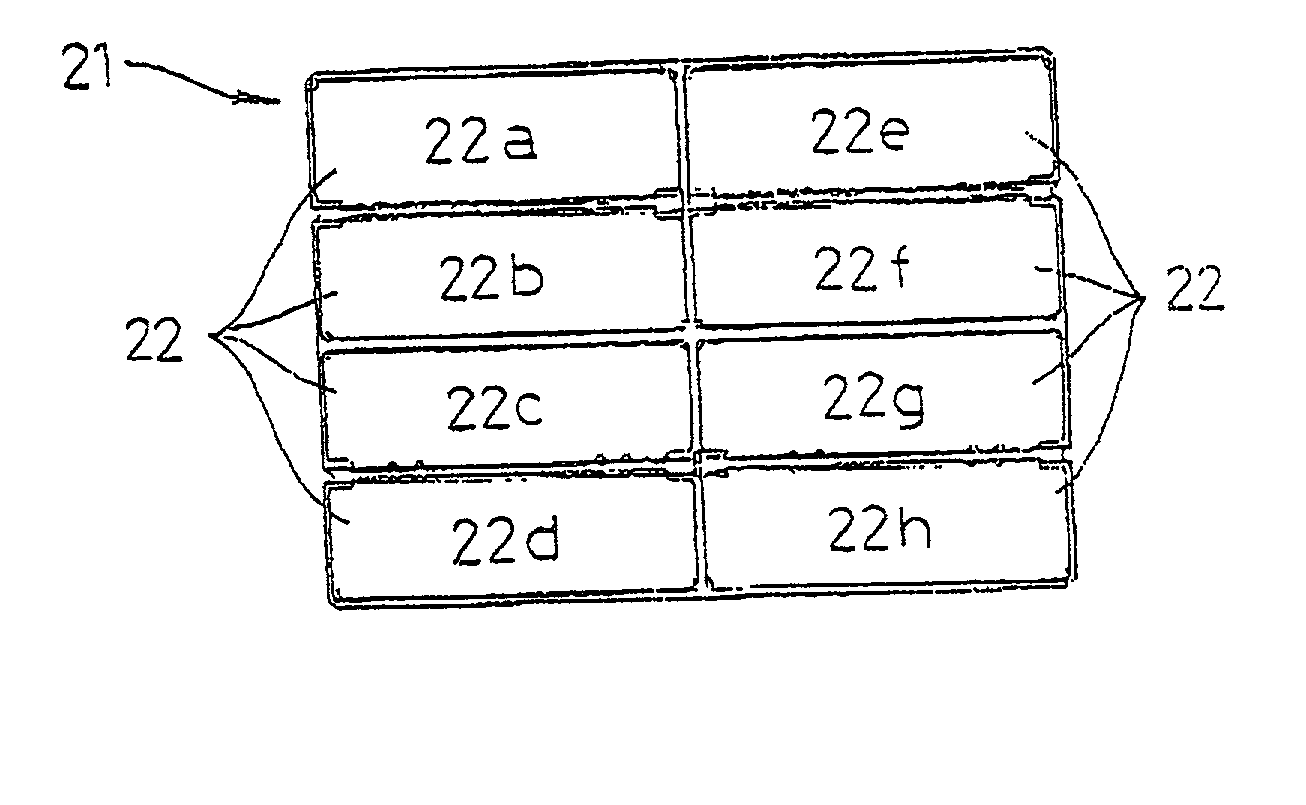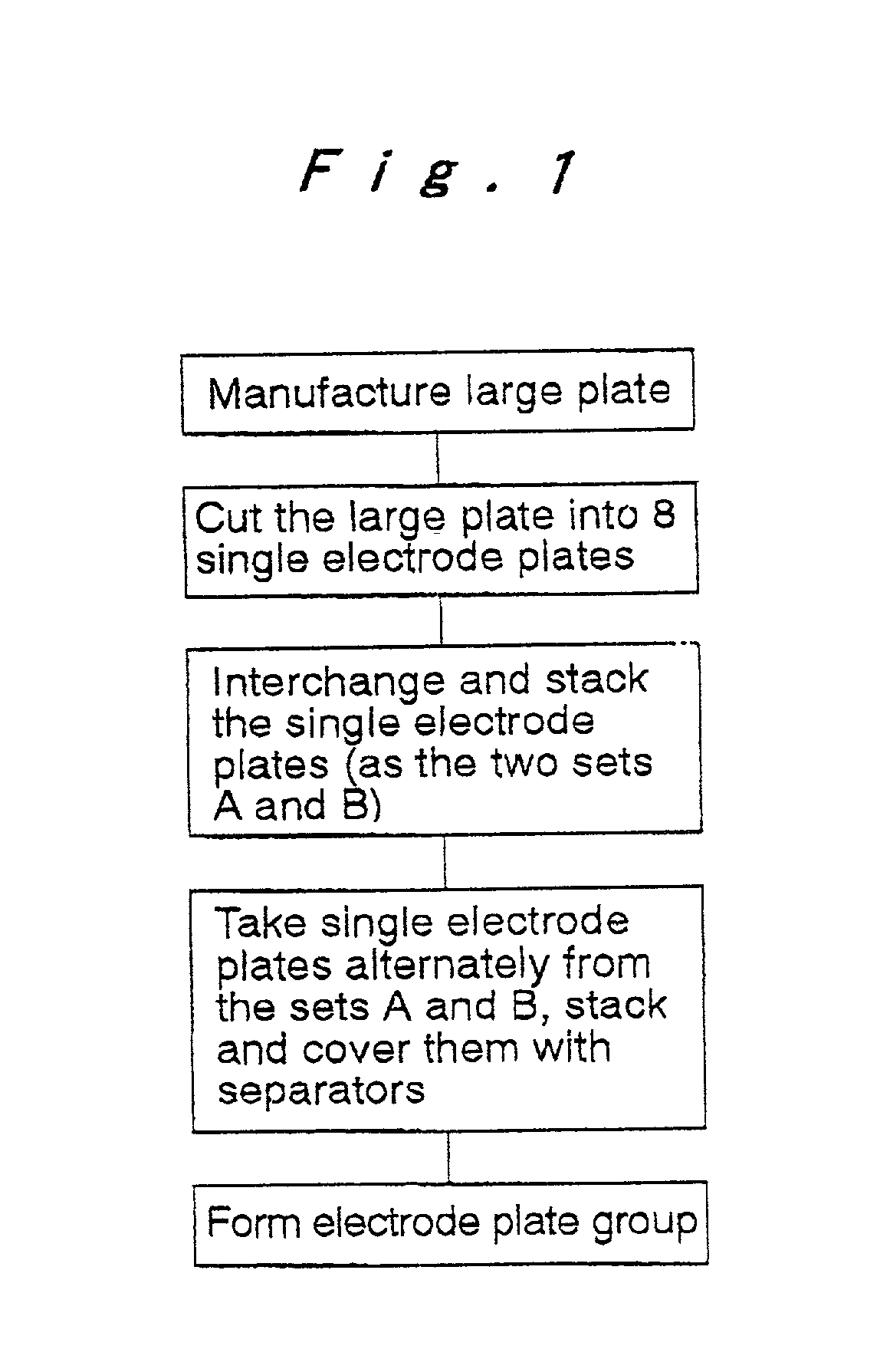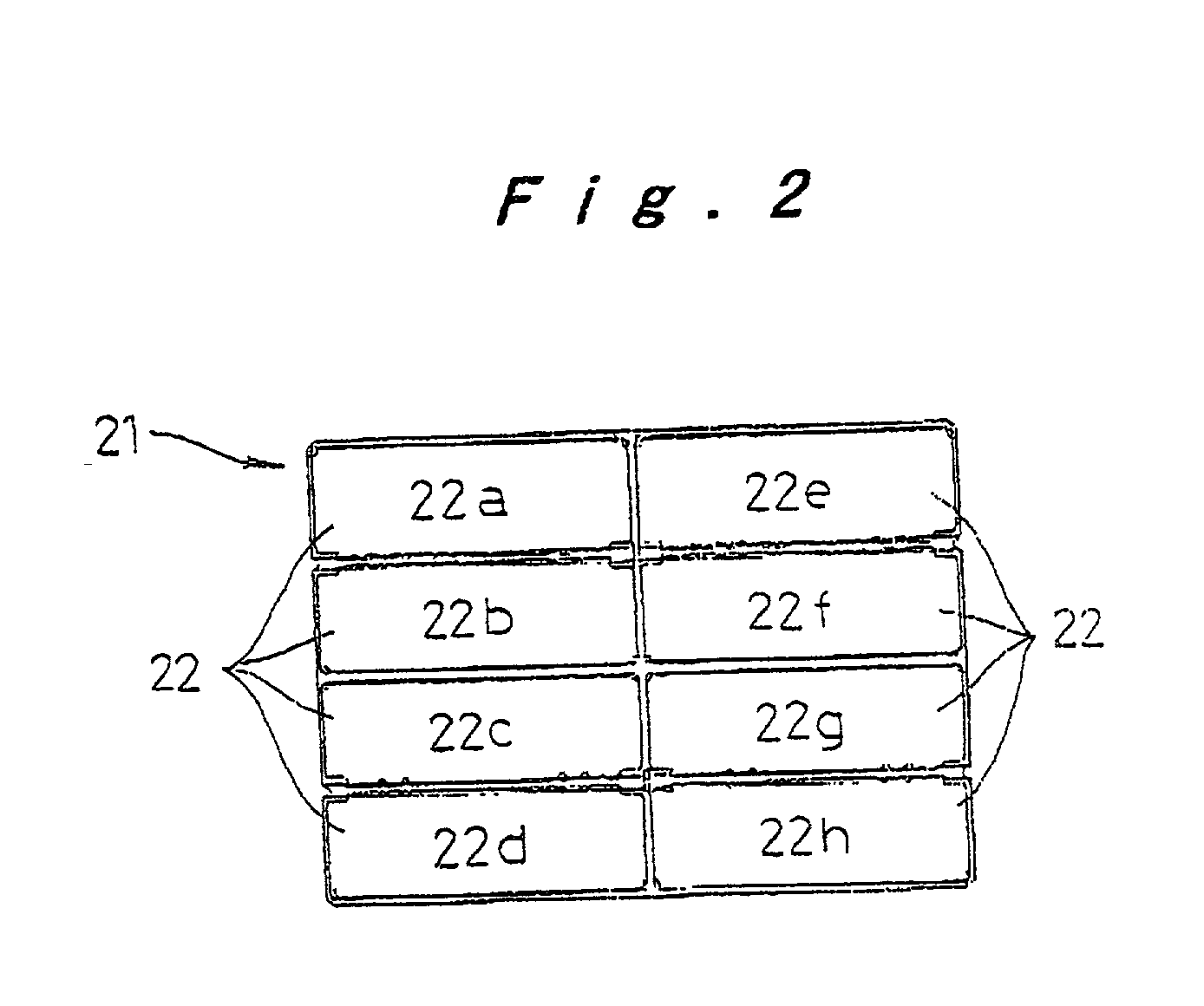Method for manufacturing electrode plate group for prismatic battery
a technology of prismatic batteries and electrode plates, which is applied in the direction of cell components, sustainable manufacturing/processing, and flat cell grouping. it is difficult to avoid the variation in the distribution of active materials between different positions on the large plate, and achieves the imbalance of capacity between the positive and negative electrodes
- Summary
- Abstract
- Description
- Claims
- Application Information
AI Technical Summary
Benefits of technology
Problems solved by technology
Method used
Image
Examples
example 2 example
Art Sorting by No No No Yes weight? Interchanging Yes Yes No No of plates? Alternate Set Yes No No No A and Set B? Variation in .+-.2.1% .+-.3.5% .+-.7.0% .+-.2.0% capacity
[0038] A variation in capacity of .+-.7.0% was observed for the comparative example where the electrode plate groups are formed without interchanging the single electrode plates. For Example 1, however, the variation in capacity was kept to just .+-.2.1%, so that variations in capacity are suppressed to a similar extent as the related art with high productivity and at low cost. Note that there is slightly more variation in Example 2 where the single electrode plates are not alternated between the sets A and B.
[0039] It should be noted that while the above embodiment is described using an example where the arrangement positions of the single electrode plates are interchanged by successively repeating operations with four patterns that are combinations of a first operation where a set composed of all the single elec...
PUM
| Property | Measurement | Unit |
|---|---|---|
| polarity | aaaaa | aaaaa |
| weight | aaaaa | aaaaa |
| weights | aaaaa | aaaaa |
Abstract
Description
Claims
Application Information
 Login to View More
Login to View More - R&D
- Intellectual Property
- Life Sciences
- Materials
- Tech Scout
- Unparalleled Data Quality
- Higher Quality Content
- 60% Fewer Hallucinations
Browse by: Latest US Patents, China's latest patents, Technical Efficacy Thesaurus, Application Domain, Technology Topic, Popular Technical Reports.
© 2025 PatSnap. All rights reserved.Legal|Privacy policy|Modern Slavery Act Transparency Statement|Sitemap|About US| Contact US: help@patsnap.com



